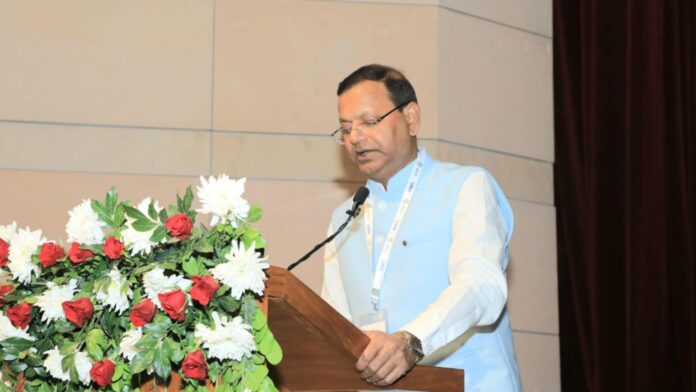
India has made significant contributions to the BRICS New Development Bank (NDB), with Union Minister of State for Finance Pankaj Chaudhary revealing that the country has contributed $2 billion to the institution. In addition, 20 externally aided projects, backed by loans amounting to $4,867 million, are currently underway across India, covering areas such as transportation, water conservation, food management, and rural connectivity.
“As of now, 20 externally aided projects with loan amounts of $4.867 million funded by the NDB are ongoing in India,” Chaudhary said on Monday while addressing a query in the Lok Sabha.
The minister’s remarks came in response to a question about India’s position on a proposed joint currency for BRICS nations and its contributions to the BRICS Bank. The inquiry was fueled by geopolitical concerns, including potential U.S. trade retaliations. Former President Donald Trump had earlier threatened 100 percent tariffs on BRICS nations, citing their efforts to reduce reliance on the U.S. dollar in global trade.
Chaudhary detailed India’s financial commitment to the NDB, noting that the $2 billion contribution was paid in seven instalments between fiscal years 2015-16 and 2021-22. These funds have been crucial in supporting various development initiatives in the country.
On the topic of a joint BRICS currency, Chaudhary referenced a report titled “BRICS Chairmanship Research on the Improvement of the International Monetary and Financial System,” prepared by Russia during its 2024 BRICS chairmanship. The report clarifies that BRICS nations do not aim to replace the U.S. dollar as a medium of exchange. Instead, the bloc seeks to provide viable alternatives to promote efficiency and foster inclusive economic globalisation.
“The report emphasises that BRICS nations recognise natural constraints and the will of the free market. Thus, BRICS do not seek to replace the US dollar as a medium of exchange,” Chaudhary noted. He further explained that the goal is to offer solutions to enhance market efficiency while addressing the inadequacies of the current cross-border payments infrastructure.
The report highlights the limitations of the existing global financial system, particularly its reliance on centralised settlement mechanisms and dominant reserve currencies like the U.S. dollar. Such a setup, it argues, represents a “legacy overhang” that fails to meet modern demands.
The dominance of the U.S. dollar in international trade remains unchallenged, with the currency accounting for over 90 percent of global transactions. However, international trade experts point to rising efforts to diversify away from dollar dependency, particularly in light of instances where the U.S. has weaponised its financial systems. Notable examples include the exclusion of Iran in 2012 and Russia in 2022 from the SWIFT network, which accelerated calls for alternative payment systems worldwide.
While the U.S. dollar retains its supremacy, other convertible currencies like the Japanese yen, euro, and British pound continue to play essential roles in global trade. Despite these developments, BRICS nations aim to complement the existing system rather than challenge it directly, focusing on fostering economic inclusivity and resilience.
India’s substantial contribution to the NDB and its ongoing development projects underscore its commitment to enhancing infrastructure and connectivity while participating in broader global financial reforms within the BRICS framework.
